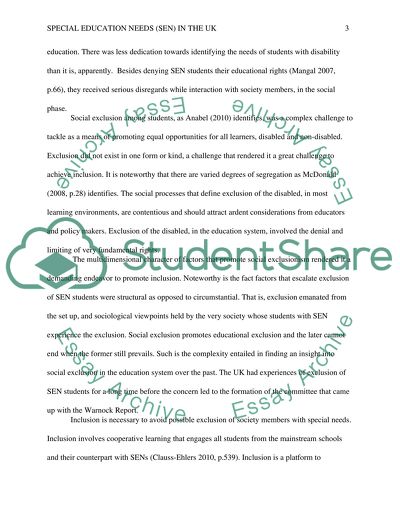Cite this document
(“Special education needs in the UK Essay Example | Topics and Well Written Essays - 2250 words”, n.d.)
Special education needs in the UK Essay Example | Topics and Well Written Essays - 2250 words. Retrieved from https://studentshare.org/education/1475705-special-education-has-been-described-as-a-journey
Special education needs in the UK Essay Example | Topics and Well Written Essays - 2250 words. Retrieved from https://studentshare.org/education/1475705-special-education-has-been-described-as-a-journey
(Special Education Needs in the UK Essay Example | Topics and Well Written Essays - 2250 Words)
Special Education Needs in the UK Essay Example | Topics and Well Written Essays - 2250 Words. https://studentshare.org/education/1475705-special-education-has-been-described-as-a-journey.
Special Education Needs in the UK Essay Example | Topics and Well Written Essays - 2250 Words. https://studentshare.org/education/1475705-special-education-has-been-described-as-a-journey.
“Special Education Needs in the UK Essay Example | Topics and Well Written Essays - 2250 Words”, n.d. https://studentshare.org/education/1475705-special-education-has-been-described-as-a-journey.


